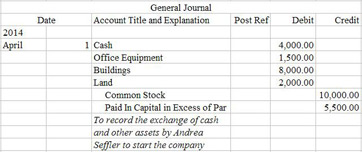Content
- Example of a Profit and Loss Report
- How Profit and Loss (P&L) Statements Work
- What Is a Profit and Loss (P&L) Statement?
- Profit and Loss Statements: The Facts
- Step 6 – Adjust for Other Income and/or Expenses
- P&L Statement: Standard Template Format (Step-by-Step)
- How to create a profit and loss statement

If you are more focused on other aspects of your business, it is perfectly acceptable to hire an outside expert to create a P&L statement for your business. The first thing that typically appears on a P&L statement is total income, which is the gross revenue for a business throughout a certain period. This may be divided by site for businesses with multiple locations. To make sure you have control over your business finances, maintain and review your P&L. Useexpense managementtools to improve your P&L and help keep your business on the path to profitability. Startup businesses that don’t have past performance to use in preparing a P&L create a pro forma P&L.
Here’s how you put one together, how to read it, and why profit and loss statements are important for running your business. The best way to find out is to create a profit and loss statement.
Example of a Profit and Loss Report
If gross profit is down, your course of action should be to increase sales. This number can tell you how well your products are performing or whether your services are profitable. We’re all in business to make a profit, so it’s no surprise that one of the most important markers for your business is your gross profit. Your gross Profit and Loss Statement profit is calculated by subtracting the cost of goods sold from revenue earned. Your final step is subtracting interest, taxes, depreciation, and amortization expenses to arrive at your net income, or net profit. The next step is to calculate any interest payments, taxes due, as well as depreciation and amortization expenses.
- For tax law purposes, there’s no requirement to generate and submit a P&L to the IRS.
- He has covered topics including digital marketing, SEO, business communications, and public policy.
- Operating revenue is typically broken out from non-operating sources of income, like interest.
- It shows a company’s financial progress during the time period being examined.
- Revenue and profit are both good signs for your business, but they’re not interchangeable terms.
That is, the expenses incurred to generate the sales of your product must be related to actual sales during the accounting period. A company that sells goods must figure the cost of goods sold . This is essentially the cost of inventory or materials used to create products, which is then subtracted from the sales to determine the actual revenue from the sales. For example, a company that carries a $20 item in inventory and sells it for $100 would have $100 in revenue, but after taking the $20 of COGS into account would report $80 in gross profit. Revenue is reported first on a https://business-accounting.net/ for small businesses and includes all income items. This entry on the P&L may be referred to as sales, gross receipts, fees, or any other term to describe the company’s operating revenue. Operating revenue is typically broken out from non-operating sources of income, like interest.
How Profit and Loss (P&L) Statements Work
The accrual method, on the other hand, records revenue when it is earned, even if payment has not yet been received. Likewise, liabilities are logged as soon as invoices are received and not necessarily when funds are outgoing. Expenses are matched in the same period as the corresponding revenue they helped create, which is called the matching principle. Find and apply for the Ink business credit card best suited for your business. Other income and other expense typically include non-recurring items, for example, gain or loss from the sale of an asset (e.g. equipment). Here are six of the reasons that limited liability companies have become a popular choice for small businesses.


